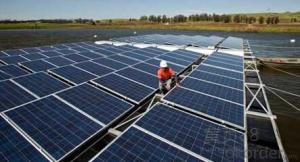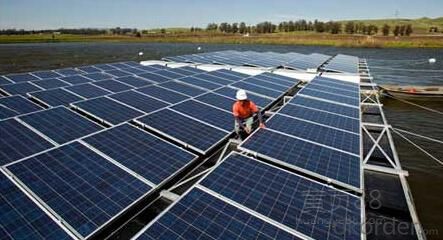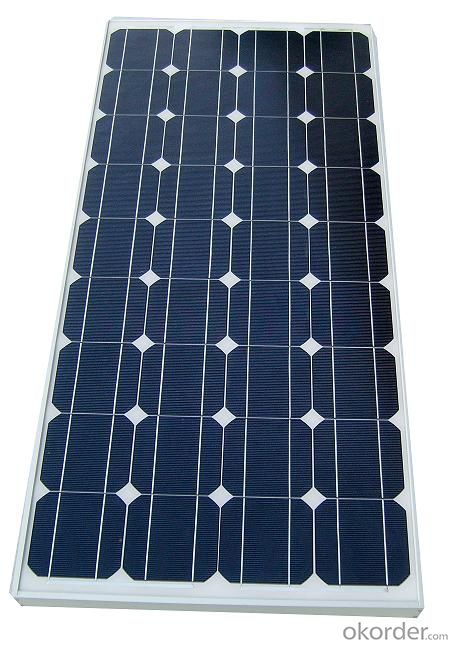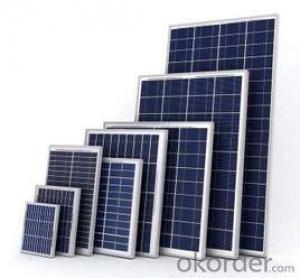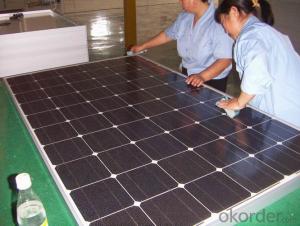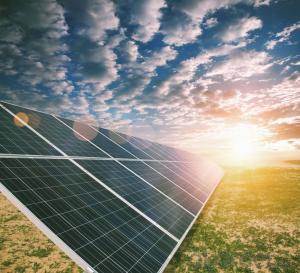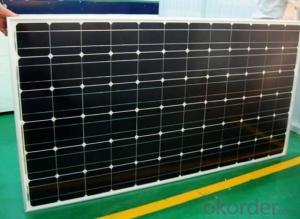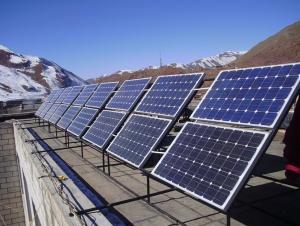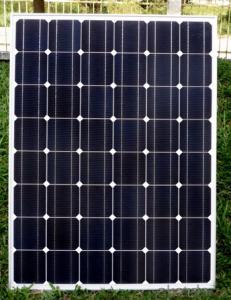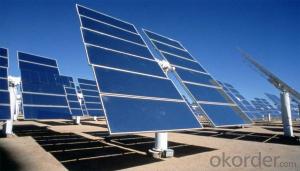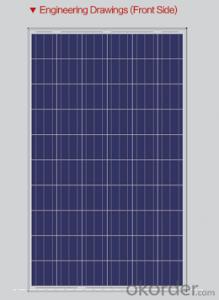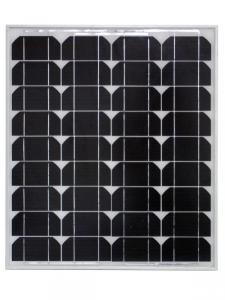UCSD Solar Panels - Monocrystalline Solar Panel Certified with High Effect Solar Cell
- Loading Port:
- Shanghai
- Payment Terms:
- TT OR LC
- Min Order Qty:
- 1000 watt
- Supply Capability:
- 10000000 watt/month
OKorder Service Pledge
OKorder Financial Service
You Might Also Like
Specification
Monocrystalline Solar Panel Certificated with High Effect Solar Cell
- TUV IEC, MCS (UK), CE, CEC (Australia), INMETRO, IDCOL, SONCAP CERTIFIED
- [EU ANTIDUMPING DUTY-FREE]
- PROFESSIONAL SOLAR PANEL MANUFACTURER SINCE 2004
FEATURES
`Long Service Life
`High Efficency Solar Cells
`Special Aluminum Frame Design
`High Transmission,Low Iron Tempered Glass - TUV IEC, MCS (UK), CE, CEC (Australia), INMETRO, IDCOL, SONCAP CERTIFIED
- [EU ANTIDUMPING DUTY-FREE]
- PROFESSIONAL SOLAR PANEL MANUFACTURER SINCE 2004
FEATURES
`Long Service Life
`High Efficency Solar Cells
`Special Aluminum Frame Design
`High Transmission,Low Iron Tempered Glass
`Advanced Cell Encapsulation
APPLICATIONS
`Solar power stations
`Rural electrification, Small home power systems
`Power supply for traffic, security, gas industry
`12V and 24V battery charging system
`Other industrial and commercial applications
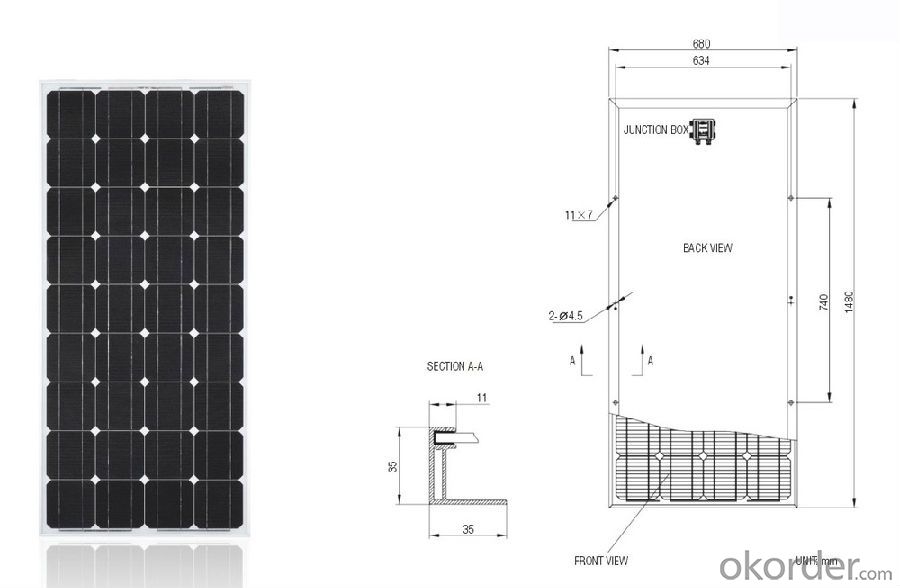
| ELECTRICAL CHARACTERISTICS | |||||||
| Model Number | KM(P)275 | KM(P)280 | KM(P)285 | KM(P)290 | KM(P)295 | KM(P)300 | |
| Maximum Power as per STC | Pmax(W) | 275 | 280 | 285 | 290 | 295 | 300 |
| Power Tolerance | % | ±3% | |||||
| Maximum Power Voltage | Vm(V) | 36.43 | 36.56 | 36.72 | 36.79 | 36.93 | 37.15 |
| Maximum Power Current | Im(A) | 7.55 | 7.66 | 7.77 | 7.89 | 7.99 | 8.08 |
| Open Circuit Voltage | Voc(V) | 43.7 | 42.92 | 44.06 | 44.21 | 44.35 | 44.5 |
| Short Circuit Current | Isc(A) | 8.1 | 8.17 | 8.23 | 8.33 | 8.41 | 8.72 |
| Maximum System Voltage | VDC | 1000 | |||||
| Cell Efficiency | % | 15.7 | 16.0 | 16.3 | 16.6 | 16.8 | 17.1 |
| Module Efficiency | % | 14.2 | 14.5 | 14.7 | 15.0 | 15.2 | 15.5 |
| Cells per Module | Pcs | 72 | |||||
| Cell Type | Polycrystalline silicon | ||||||
| Cell Size | mm | 156 x 156 | |||||
| Bypass Diodes | Pcs | 12Amp, 6 pcs | |||||
| Max. Series Fuse Rating | A | 15A | |||||
| Temperature coefficient of Isc | %/°C | 0.05 | |||||
| Temperature coefficient of Voc | %/°C | -0.35 | |||||
| Temperature coefficient of power | %/°C | -0.47 | |||||
| NOCT- Nominal operating cell temperature | °C | 47 ± 2 | |||||
| Operating Temperature | °C | -40 ~ +85 | |||||
| MECHANICAL CHARACTERISTICS | |||||||
| Dimensions | mm | 1954 x 990 x 50 | |||||
| Weight | Kg | 23.5 | |||||
| Type of Junction Box | TUV certified, IP65 | ||||||
| Cable Type, Diameter | TUV certified, 4mm2, 90 cm in length | ||||||
| Connector | compatible to Type 4 (MC4) | ||||||
| Tempered Glass | 3.2 mm, high transmission, low iron | ||||||
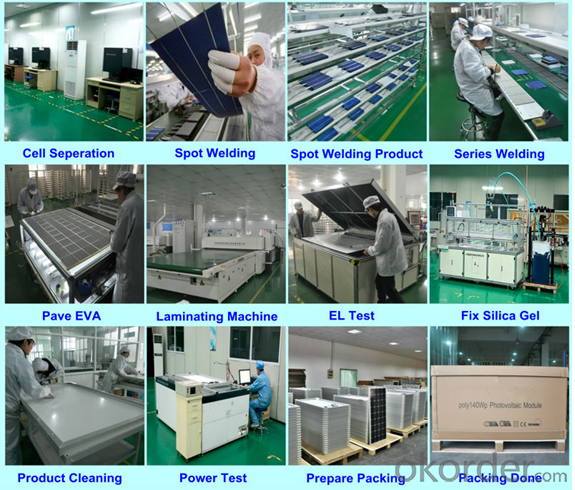 Packing
Packing
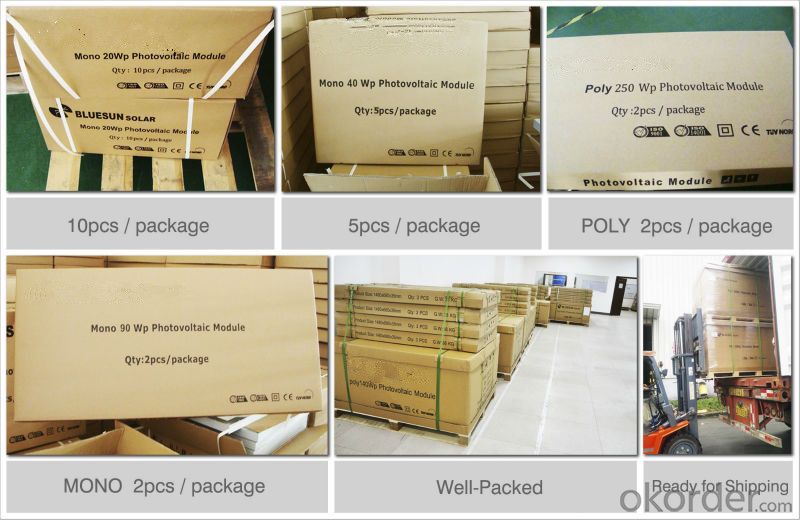
FAQ
1. What kind of Solar Cells does it have
---poly crystalline 156*156mm and 125*125mm or mono 125*125mm and 156*156mm
2. Is the front panel Glass or Plastic
---Tempered glass 3.2mm thickness or adjust to what you need, Light transmittance up to 95%.
3. Does it meet Europe Standards for Solar Energy
---This is TUV approval products, all the producing procedure apply TUV&UL.
4. What is the Efficiency level
--- Between 16-18.9% for solar cells.
5. What is the Nominal Voltage
--- 18v 20v 24v 36v 30v 48v , and so on, we can adjust to what you need.
6. What is the Warranty Period, How many years?
Power efficiency warranty:
---90% in 10 years; 80% in 25 years.
- Q: Can solar panels be installed on the ground?
- Yes, solar panels can be installed on the ground. Ground-mounted solar panel systems are a popular alternative to rooftop installations, especially in areas with ample available space. They are often used for large-scale solar projects, such as solar farms or commercial installations, but can also be installed in residential settings if space allows. Ground-mounted panels offer flexibility in terms of orientation and tilt angle, optimizing energy production.
- Q: where I can find solar panel the has 4.8 volts? Like those solar walkway light or something that has 4.8 volts solar panel.Do you think I can get it from home depot?
- How Solar Cells Work by Scott Aldous Inside This Article . Introduction to How Solar Cells Work 2. Photovoltaic Cells: Converting Photons to Electrons 3. How Silicon Makes a Solar Cell 4. Anatomy of a Solar Cell 5. Energy Loss in a Solar Cell 6. Solar-powering a House 7. Solving Solar-power Issues 8. Solar-power Pros and Cons 9. Lots More Information 0. See all Physical Science articles You've probably seen calculators that have solar cells -- calculators that never need batteries, and in some cases don't even have an off button. As long as you have enough light, they seem to work forever. You may have seen larger solar panels -- on emergency road signs or call boxes, on buoys, even in parking lots to power lights. Although these larger panels aren't as common as solar powered calculators, they're out there, and not that hard to spot if you know where to look. There are solar cell arrays on satellites, where they are used to power the electrical systems. You have probably also been hearing about the solar revolution for the last 20 years -- the idea that one day we will all use free electricity from the sun. This is a seductive promise: On a bright, sunny day, the sun shines approximately ,000 watts of energy per square meter of the planet's surface, and if we could collect all of that energy we could easily power our homes and offices for free.
- Q: can a small solar panel be charged with lamps?
- yes, although charged is the wrong term. But for every 00 watts you put into the lamps, you will get well less than 0 watts out of the solar array. Well less. .
- Q: Online stores selling solar photo-voltaic generation kits gives specs indicating the power generation capability of the system. For example, Solar World Grid-Tie Solar Electric System with 245W Panels PV Powered PVP2000 Inverter, .2 to 2.4 kW. This seems to indicate that the system can generate .2 to 2.4 kW. Is that per day? Per month? I'm trying to calculate the return on investment, but can't because I don't know how much power a system such as this will generate in a month.
- As Ed said, that .2 kW is an instantaneous rating in bright sun. The way to do this right is to consult the maps here rredc.nrel /solar/old_data/nsr... to find the number of equivalent sun-hours your location gets per day. Select, Average, Annual, Flat plate tilted south at latitude. A map will come up. For northern California, it shows 5 equivalent sun hours per day, for example. If the system is .2 kW, then .2 x 5 = 6.0 kWh of energy the system will generate per day, on average. That takes into account cloudy days, short winter days, long summer days, everything. The 2.4 kW system would give double that, obviously. But that's an example, based on a specific location. Phoenix would do better, Seattle would do worse.
- Q: i attached a usb charger to my solar panel(it has an output of about .2 volts) but i read on my multimeter its only using about 8 volts however on the conventional wall charger that i use to charge it has an output of about 5. volts.... i believe that my mp3 player is not charging it does not display the charging icon when it is on or off ....is this becuase the output is higher ? do i need to install a volt dropping diode to prevent it from putting to much energy at once? (my mp3 charges fine on the wall charger but does not seem to respond to the solar panel so it the circuits are fine....)
- 5.3V is the open voltage or? So the full wattage of the photograph voltaic panel is 45W or so? i assume you are able to no longer make all your small A/C home equipment into DC ones. so which you would be able to think of bearing directly to the 2V DC enter 00W inverter. this type of inverter might have a some bit extensive enter voltage variety from like V-20V some situations.
- Q: Can solar panels be installed on backpacks or camping gear?
- Yes, solar panels can be installed on backpacks or camping gear. These portable solar panels are designed to be lightweight and flexible, making them suitable for outdoor activities. They can be used to charge small electronic devices like phones, tablets, or portable speakers while on the go, providing a convenient and sustainable power source.
- Q: Can solar panels be installed on warehouses or industrial facilities?
- Yes, solar panels can be installed on warehouses or industrial facilities. In fact, these large open spaces are often ideal for installing solar panels due to the ample roof space available. Installing solar panels on warehouses or industrial facilities can help generate clean and renewable energy, reduce electricity costs, and contribute to sustainability efforts.
- Q: The colder a solar panel gets the more efficient it seems to be. As the panel warms, it loses some efficiency. Why is this so? Please explain in a way you would expect a high school kid to understand it, as I am a high-schooler and i have to explain this to other high-schoolers.
- Absolutely temperature matters. So what do higher temperatures do to solar photovoltaic panels? As temperatures rise, the efficiency of solar panels decreases. Heat causes electrical resistance to the flow of electrons. On days where the temperature is more than 75 degrees, the electrical resistance makes the voltage fall thereby producing less kilowatts per hour. Your roof is much hotter than temperatures on the ground. That’s why solar panels are not mounted flat to a roof. There’s usually a few inches of spaces between the panels and roof so air flow can easily pass through and cool the panels down. There are some photovoltaic panels that are designed specifically to operate in hotter temperatures. These panels have a higher temperature coefficient. This is especially important in high heat climates like Arizona or New Mexico, but probably wouldn’t make too much of a difference in New England (except maybe this year). If someone lives in one of these areas, they should speak to a solar installer to make sure they are using they right equipment for their region. Please note: Solar thermal panels used to heat water can withstand high temperatures without any degradation. In fact, hotter temperatures would actually be better for these types of modules.
- Q: Ok so i'm writing this research paper on why solar panels are the best way to quot;go greenquot;. I need at least 5-7 reasons why they are good. and a common counterargument that i could defend. I've already come up with incentives and efficiency but i need a few more Please help its very important and worth half my grade
- I'm a big fan of solar panels, and we even have an array on our house, but I would have a hard time supporting the thesis that solar panels are the best way to go green. Conservation and efficiency are. Using less is better than making more. If someone has the money for panels, but their house is poorly insulated, their money would be better spent on insulation. Pretty much anyone in the solar industry would agree. And solar hot water makes sense over a much wider geographical range than solar electric.
- Q: How does the size of a solar panel affect its performance?
- The size of a solar panel directly affects its performance. Generally, larger solar panels have a higher power output and can generate more electricity. This is because larger panels have more surface area to capture sunlight, allowing them to convert more solar energy into usable electricity. Additionally, larger panels tend to have more solar cells, which increases their efficiency and overall performance. However, it is important to consider other factors such as the quality of the solar cells and the efficiency of the panel's design, as these can also impact performance regardless of size.
Send your message to us
UCSD Solar Panels - Monocrystalline Solar Panel Certified with High Effect Solar Cell
- Loading Port:
- Shanghai
- Payment Terms:
- TT OR LC
- Min Order Qty:
- 1000 watt
- Supply Capability:
- 10000000 watt/month
OKorder Service Pledge
OKorder Financial Service
Similar products
Hot products
Hot Searches
